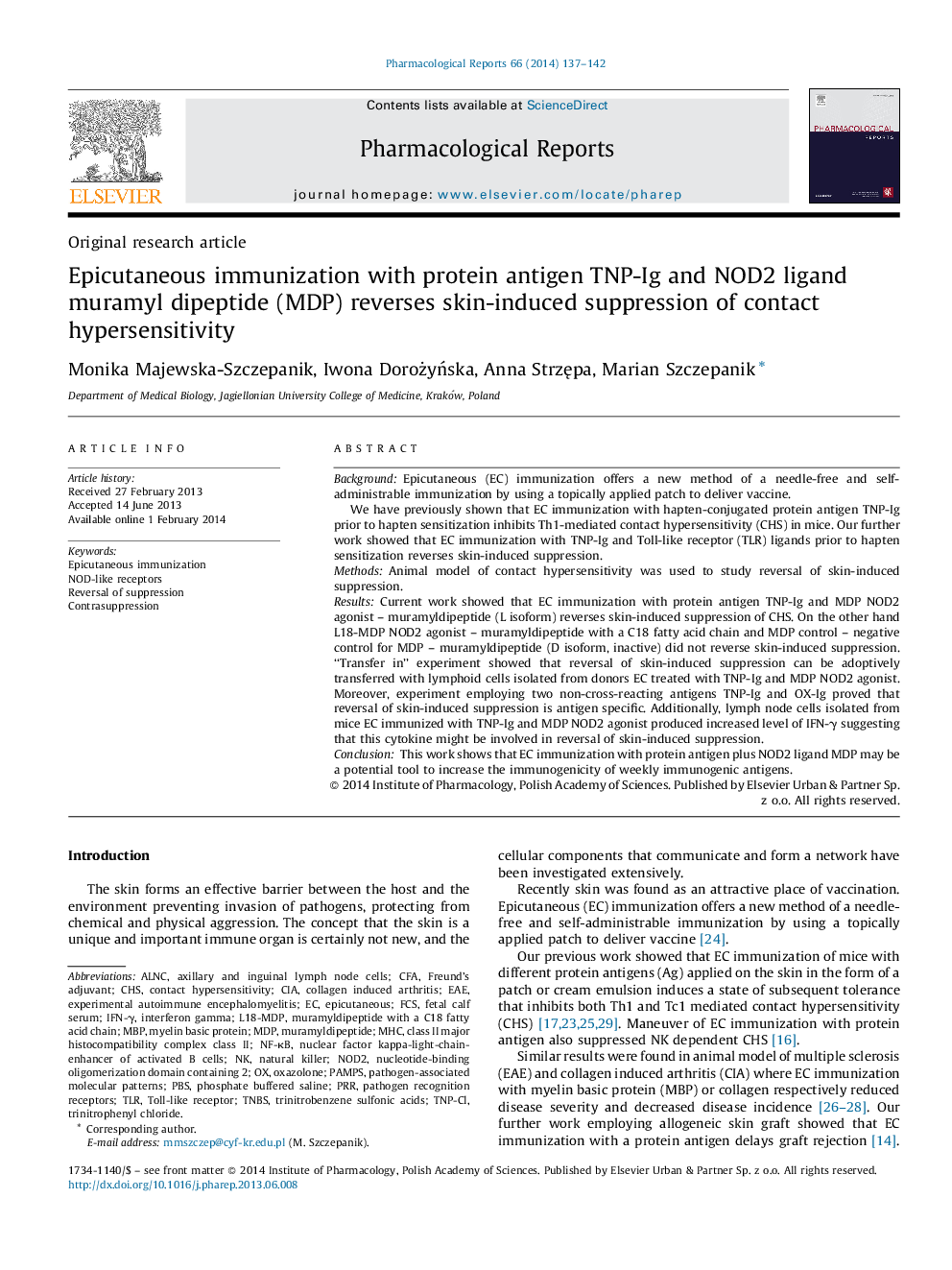| Article ID | Journal | Published Year | Pages | File Type |
|---|---|---|---|---|
| 2010631 | Pharmacological Reports | 2014 | 6 Pages |
BackgroundEpicutaneous (EC) immunization offers a new method of a needle-free and self-administrable immunization by using a topically applied patch to deliver vaccine.We have previously shown that EC immunization with hapten-conjugated protein antigen TNP-Ig prior to hapten sensitization inhibits Th1-mediated contact hypersensitivity (CHS) in mice. Our further work showed that EC immunization with TNP-Ig and Toll-like receptor (TLR) ligands prior to hapten sensitization reverses skin-induced suppression.MethodsAnimal model of contact hypersensitivity was used to study reversal of skin-induced suppression.ResultsCurrent work showed that EC immunization with protein antigen TNP-Ig and MDP NOD2 agonist – muramyldipeptide (L isoform) reverses skin-induced suppression of CHS. On the other hand L18-MDP NOD2 agonist – muramyldipeptide with a C18 fatty acid chain and MDP control – negative control for MDP – muramyldipeptide (D isoform, inactive) did not reverse skin-induced suppression. “Transfer in” experiment showed that reversal of skin-induced suppression can be adoptively transferred with lymphoid cells isolated from donors EC treated with TNP-Ig and MDP NOD2 agonist. Moreover, experiment employing two non-cross-reacting antigens TNP-Ig and OX-Ig proved that reversal of skin-induced suppression is antigen specific. Additionally, lymph node cells isolated from mice EC immunized with TNP-Ig and MDP NOD2 agonist produced increased level of IFN-γ suggesting that this cytokine might be involved in reversal of skin-induced suppression.ConclusionThis work shows that EC immunization with protein antigen plus NOD2 ligand MDP may be a potential tool to increase the immunogenicity of weekly immunogenic antigens.
